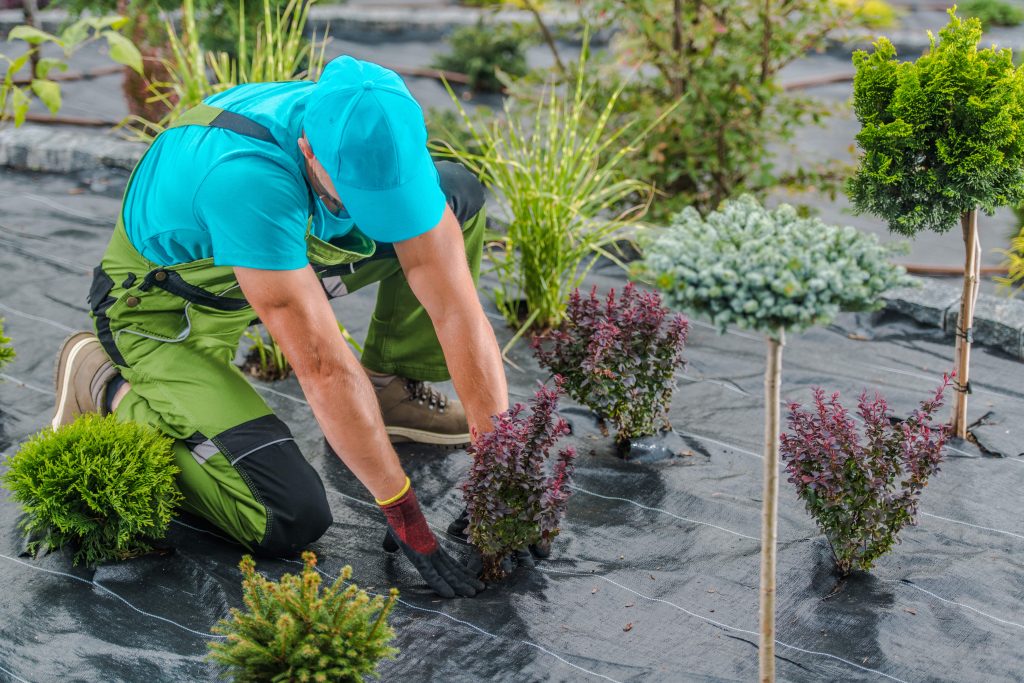Creating a flourishing garden is a rewarding venture, whether for personal enjoyment or enhancing the value of your property. The success of your garden starts with proper plant installation. In this comprehensive guide, we will walk you through expert tips and best practices to ensure that your garden thrives from day one.
Assessing Your Garden Site
Before planting anything, it’s crucial to assess your garden site. Understanding your space involves several factors:
- Soil Quality – Conduct a soil test to determine pH levels, nutrient content, and texture. Healthy soil is rich in organic matter and has good drainage. If your soil is lacking, consider amending it with compost or other organic materials to enhance its fertility.
- Sunlight Exposure – Observe how much sunlight your chosen area receives throughout the day. Most plants thrive in full sun (6-8 hours), while others prefer partial shade. This knowledge will guide your selection of plants.
- Microclimates – Identify any microclimates within your garden. These are small areas that may have different temperature or moisture levels. For instance, a spot next to a brick wall may retain heat and be more suitable for heat-loving plants.
Choosing the Right Plants
Selecting the appropriate plants is essential for a successful garden installation. Here’s how to make informed choices:
- Native vs. Non-Native Plants – Consider incorporating native plants into your garden. They are well adapted to local conditions, require less maintenance, and support local wildlife. Non-native plants can be beautiful but may require more resources to thrive.
- Plant Compatibility – Ensure that the plants you choose are compatible. Consider their water, light, and nutrient needs. Group plants with similar requirements together to create a harmonious ecosystem.
- Seasonal Considerations – Plan your garden with seasonal interest in mind. Choose a mix of perennials and annuals that bloom at different times throughout the year to maintain color and vitality.
Preparing the Planting Area
Once you’ve selected your plants, it’s time to prepare the planting area properly.
- Clearing Debris – Remove any weeds, rocks, and debris from the area. This helps prevent competition for nutrients and ensures that your new plants have a clear space to establish roots.
- Tilling the Soil – Loosen the soil with a garden fork or tiller to improve aeration and drainage. If your soil is compacted, breaking it up will help your plants grow more robustly.
- Adding Amendments – Based on your soil test results, add necessary amendments. Incorporate compost, well-rotted manure, or fertilizers as needed to boost soil fertility.
Planting Techniques
The way you plant your flowers and shrubs can make all the difference. Here are key steps to follow:
- Digging the Right Holes – Dig holes that are twice as wide as the root ball but no deeper than the ball itself. This allows roots to spread out easily.
- Proper Depth – Ensure that the top of the root ball is level with the soil surface. Planting too deep can suffocate the roots, while planting too high can expose them.
- Spacing – Give each plant enough space to grow. Refer to the plant’s label for specific spacing recommendations to avoid overcrowding.
- Watering Immediately After Planting – Once the plants are in the ground, water them thoroughly. This helps eliminate air pockets and encourages immediate root contact with the soil.

Mulching for Success
Mulching is an essential step that should not be overlooked.
- Benefits of Mulch – Mulch retains moisture, suppresses weeds, and regulates soil temperature. Organic mulches, such as bark or straw, also improve soil structure as they decompose.
- How to Apply Mulch –Spread a layer of mulch 2-3 inches thick around the base of your plants, ensuring that it doesn’t touch the plant stems to avoid rot.
Establishing a Watering Routine
Watering is crucial in the early stages of plant installation.
- Initial Watering Needs – Newly planted gardens typically need more water until their roots establish. Water deeply but less frequently to encourage deep root growth.
- Long-Term Watering Strategy – Once established, adjust your watering schedule based on the season and weather conditions. Consider using drip irrigation for efficiency and to conserve water.
Seasonal Garden Care
As seasons change, so do the care requirements for your garden.
- Fall Preparation – Prepare your garden for winter by removing dead plants, mulching, and planting cover crops to enrich the soil.
- Spring Awakening – In spring, prune any remaining dead foliage and assess any winter damage. Begin planting new annuals and perennials to refresh your garden.
The best time to plant a garden depends on your climate and the types of plants you wish to grow. Generally, spring is ideal for most plants as it provides warmer soil temperatures and ample sunlight. However, fall can also be a great time for planting perennials and certain vegetables, allowing them to establish roots before winter.
To assess soil health, conduct a soil test to measure pH levels, nutrient content, and texture. Healthy soil should be rich in organic matter, have a balanced pH (typically between 6.0 and 7.5 for most plants), and provide good drainage. You can also observe the soil structure; it should crumble easily and have a mix of clay, silt, and sand.
Spacing between plants varies depending on the species. Generally, smaller plants can be spaced about 12-18 inches apart, while larger plants may require 2-3 feet of space. Always refer to the plant labels or research specific spacing requirements for the varieties you choose to ensure healthy growth and reduce competition for resources.
Newly planted plants typically need more frequent watering to establish their roots. Water them deeply about 2-3 times a week, depending on rainfall and temperature. After a few weeks, you can gradually reduce the frequency based on the plants' needs and local weather conditions. Once established, most plants require watering only during dry spells.
Mulch offers several benefits, including moisture retention, weed suppression, and temperature regulation for the soil. Organic mulches, like bark or straw, also improve soil quality as they decompose over time, adding nutrients back into the soil. Applying a 2-3 inch layer of mulch around your plants can significantly enhance their growth and overall health.
Conclusion
Creating a beautiful and thriving garden requires careful planning, attention to detail, and ongoing maintenance. By following the expert tips outlined in this guide, you can ensure that your garden installation is successful and that your plants flourish for years to come. Remember, a well-maintained garden not only enhances your property’s aesthetic appeal but also contributes positively to the environment.
If you need assistance with your garden and plant installation or want to take your outdoor space to the next level, don’t hesitate to reach out. Call Erie Lawn Boys now at (720) 340-1090 for professional landscaping services tailored to your needs. Let us help you create the garden of your dreams!

